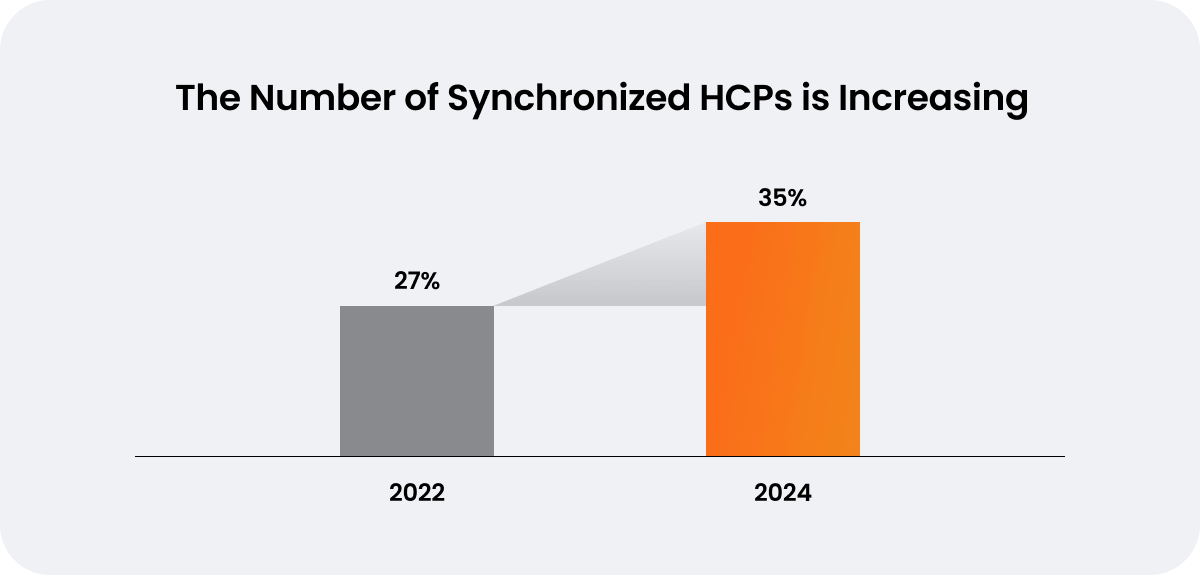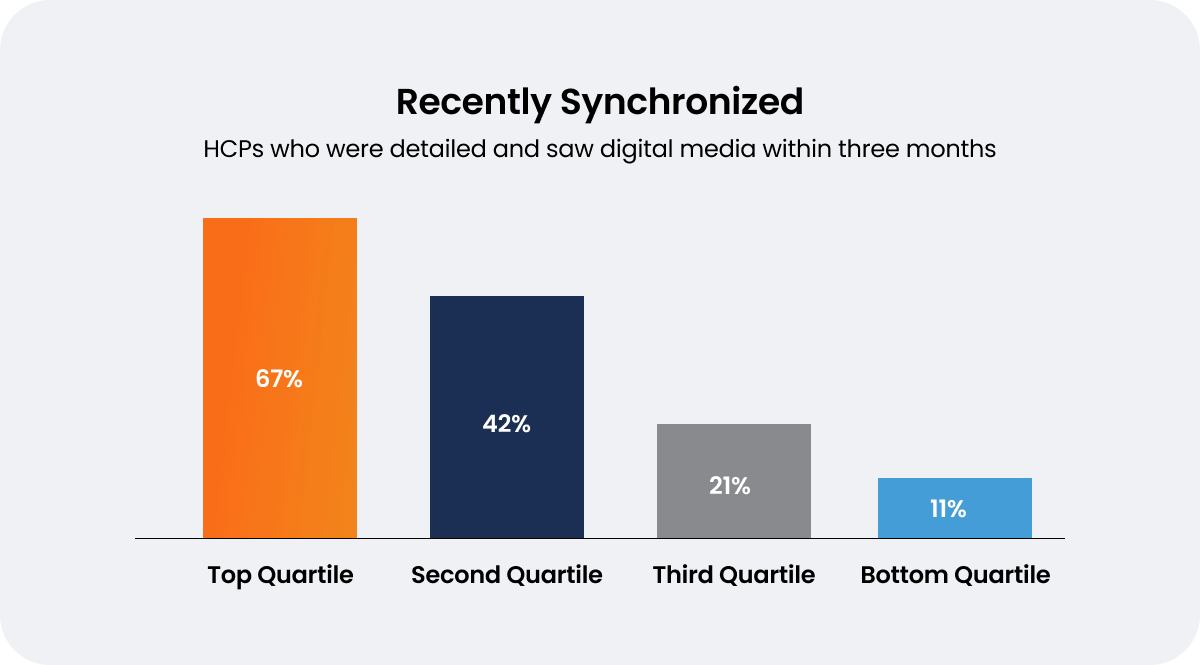Biopharmas Boost Marketing Effectiveness by 23% by Synchronizing Digital Media with Field
Close and timely coordination of field engagements and HCP digital advertising – or synchronization – increases marketing effectiveness by 23%. While these activities are important on their own, synchronization helps marketers and field teams maximize their efforts across the organization and deliver a better omnichannel experience to customers.
HCP synchronization is on the rise
Brands are starting to adjust their strategies to better synchronize HCP sales and marketing. Although the industry is still early in this journey, the percentage of synchronized HCPs has increased by 8% in under two years.

Data also shows variability among brands synchronizing HCP sales and marketing. Brands in the top quartile have a significantly higher percentage of synchronization (67%) than those in the bottom quartile (11%). Brands in the bottom quartile – and those not currently synchronizing – have a significant opportunity to align field and marketing efforts.

Three strategies for effective synchronization
Aligning sales and marketing can improve results, but integrating these efforts is often challenging. Most organizations still have silos that limit collaboration across field and marketing teams. Priorities are often different – and sometimes even compete. HCP field and marketing teams often use different data, which makes it difficult to compare and look at programs holistically.
Brands that effectively execute synchronization incorporate three key strategies for success:
- Align target lists
Sales and marketing alignment begins with a shared understanding of high-profile HCPs; however, on average, only 53% of HCPs called on are identified on a marketer’s NPP universe list. By ensuring that marketing initiatives include the same HCP list as the field team, both groups can effectively coordinate their efforts and evaluate impact consistently. This unified approach to targeting creates a foundation for meaningful collaboration between sales and marketing activities.
- Define a clear strategy
Strategic alignment of HCP targeting across field and marketing channels is essential. This strategy should clearly define how non personal promotion (NPP) will be used in relation to field activities to ensure alignment with overall business objectives. For example, will it complement sales efforts, fill coverage gaps, or both?
- Optimize timing and frequency
There are many moving parts in sales and marketing activities, but the timing of these activities drives the most productive outcomes. Closely aligning the timing and frequency of messaging delivery to HCPs across both personal and non personal promotion is critical for success.
How to measure success
Understanding how synchronization investments are performing can help continuously improve them and drive better results. A strong measurement framework helps teams track progress and understand if areas of the strategy need improvement or change. This also helps ensure teams are working toward the same goals.
When identifying key performance indicators (KPIs), teams need to consider how KPIs can evolve and improve to support synchronization. For example, instead of only looking at percentage reach against their target lists, HCP marketers can use unified views to show how NPP efforts are complementing or augmenting what is happening in the field.
Sharing data on how synchronization impacts brand conversions and health outcomes – not only within sales and marketing, but also across the organization – can help validate this new approach. This can lead to changes that support a more integrated way of working, from removing silos to allocating budgets.
Conclusion
Both marketing and sales influence prescribing behavior. In the past, coordinating efforts and accessing the right data was challenging. Advances in analytics have made it easier to connect the dots and successfully activate synchronization to meet promotional goals, improve health outcomes, and drive omnichannel excellence.
About Veeva Crossix
Veeva Crossix measures marketing effectiveness across direct-to-consumer (DTC) and HCP marketing for more than 200 life sciences brands, including 9 of the top 10 global pharmaceutical companies. The above analysis focuses on Veeva Crossix and Veeva CRM data from January to June 2024.